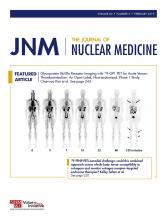Abstract
The purpose of this study was to evaluate the ability of 21-18F-fluoro-16α,17α-[(R)-(1′-α-furylmethylidene)dioxy]-19-norpregn-4-ene-3,20-dione (18F-FFNP) to measure alterations in progesterone receptor (PR) protein level and isoform expression in response to 17β-estradiol (E2) challenge. Methods: T47D human breast cancer cells and female mice bearing T47D tumor xenografts were treated with E2 to increase PR expression. 18F-FFNP uptake was measured using cell uptake and tissue biodistribution assays. MDA-MB-231 breast cancer clonal cell lines were generated that express the A or B isoform of human PR. PR protein levels, transcriptional function, and subcellular localization were determined. In vitro 18F-FFNP binding was measured via saturation and competitive binding curves. In vivo 18F-FFNP uptake was measured using tumor xenografts and PET. Statistical significance was determined using ANOVA and t tests. Results: After 48 and 72 h of E2, 18F-FFNP uptake in T47D cells was maximally increased compared with both vehicle and 24 h of E2 treatment (P < 0.0001 vs. ethanol; P = 0.02 and P = 0.0002 vs. 24 h for 48 and 72 h, respectively). T47D tumor xenografts in mice treated with 72 h of E2 had maximal 18F-FFNP uptake compared with ethanol-treated mice (percentage injected dose per gram: 11.3 ± 1.4 vs. 5.2 ± 0.81, P = 0.002). Corresponding tumor-to-muscle uptake ratios were 4.1 ± 0.6, 3.9 ± 0.5, and 2.3 ± 0.4 for 48 h of E2, 72 h of E2, and ethanol-treated mice, respectively. There was no significant preferential 18F-FFNP binding or uptake by PR-A versus PR-B in the PR isoform–specific cell lines and tumor xenografts. Conclusion: 18F-FFNP is capable of measuring estrogen-induced shifts in total PR expression in human breast cancer cells and tumor xenografts, with equivalent isoform binding.
Footnotes
Published online Jul. 20, 2018.
- © 2019 by the Society of Nuclear Medicine and Molecular Imaging.







